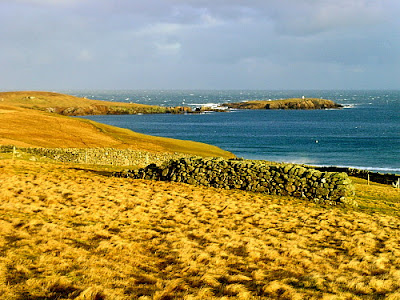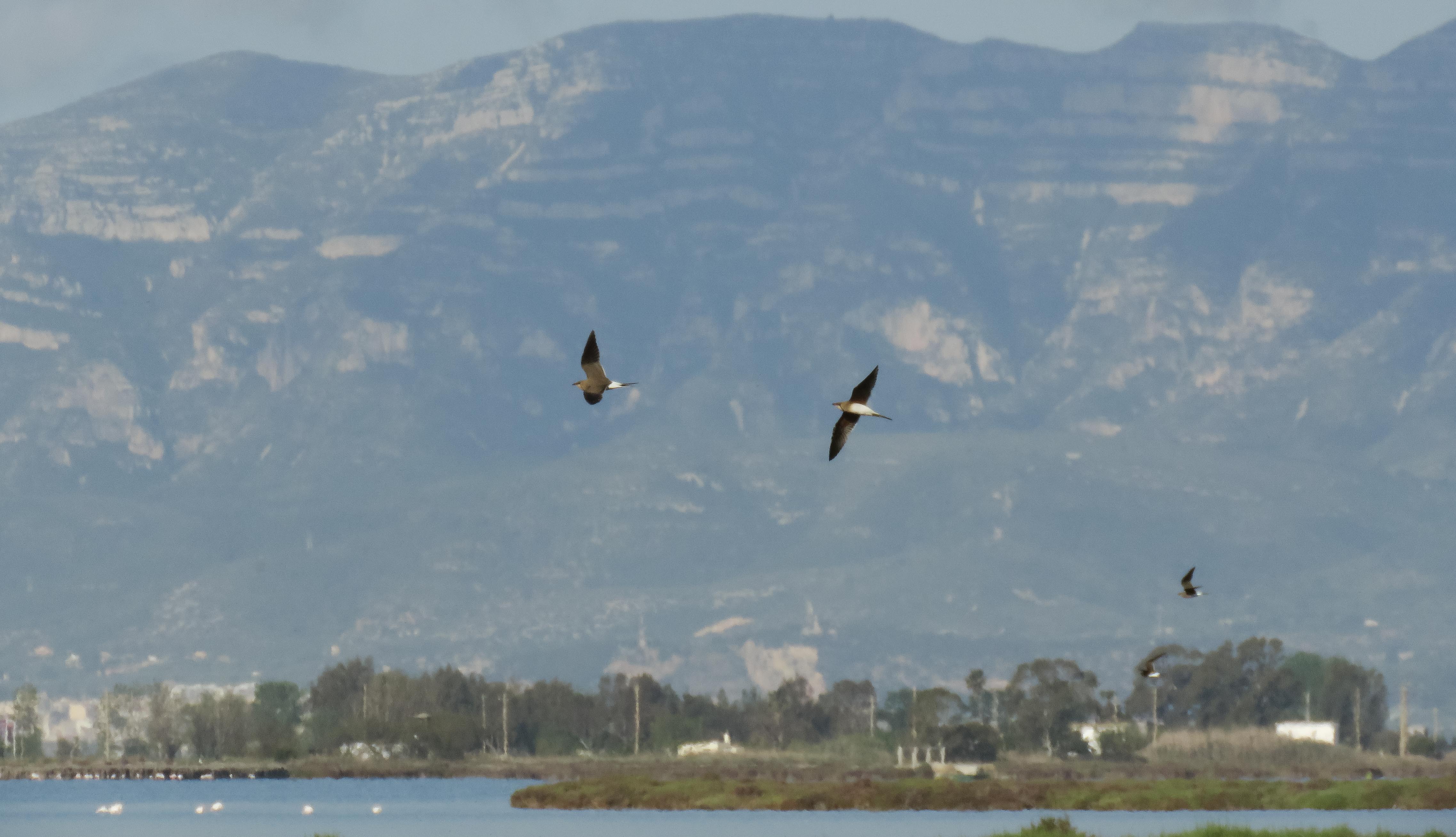The weather was far better than forecast albeit the wind increased during the day and the first wintry hailstorm arrived just before dark. Sea-watching seemed worth a try from Lamba Ness and 90 minutes from 9am produced a large northerly movement of Fulmars including 16 blue Fulmars, several hundred Gannets, 3 Glaucous Gulls (ad & 2 juvs), a few Kittiwakes and a couple of Guillemots and a close encounter with an Otter! Another 3 juv Glaucous Gulls were patrolling the clifftops and the Pink-footed Goose was still with the Greylags. A quick check of Skaw revealed just a single juv Glaucous Gull and the 4 Tundra Bean Geese were still present at Norwick. Burrafirth again produced the bird of the day as on seeing a bird flying erratically low over the marram grass I lifted my bins anticipating seeing a Snipe... Little Auk - brilliant! It careered towards the beach and flew out over the sea and around the cliff. We dashed to view along the cliffs but couldn't see it on the sea so perhaps it kept going, but nonetheless, a very memorable encounter! A single juv Glaucous Gull was on the beach and as we returned a juvenile Peregrine flew towards Loch of Cliff.
Norwick & Millfield
North Dale & Haroldswick bay
Sea-watching shelters at Lamba Ness
blue Fulmar passing Lamba Ness
Skaw from Lamba Ness
Pink-footed Goose and Greylag at Lamba Ness
Tundra Bean Geese at Norwick
Juvenile Peregrine at Burrafirth
It had a rather unfamiliar feel to it courtesy of its darkish underwing-coverts, dark belly patch and pale buff-washed and only lightly barred undertail-coverts. A good friend far more experienced than me with local Shetland Peregrines also pointed out its interesting face pattern and long narrow moustachial stripes. Whilst the subspecific identification of Peregrines is fraught with difficulty Birding World Vol. 24 No. 3 tackled the identification of Arctic Peregrines with relevant differences neatly summarised by Van Duivendijk as malar stripe relatively narrow and relatively large, uniform pale cheek, apricot-washed undertail-coverts narrowly barred to almost unmarked - in peregrinus broadly barred. Sibley's portrayal of Tundra Peregrine proves further food for thought:
It had a rather unfamiliar feel to it courtesy of its darkish underwing-coverts, dark belly patch and pale buff-washed and only lightly barred undertail-coverts. A good friend far more experienced than me with local Shetland Peregrines also pointed out its interesting face pattern and long narrow moustachial stripes. Whilst the subspecific identification of Peregrines is fraught with difficulty Birding World Vol. 24 No. 3 tackled the identification of Arctic Peregrines with relevant differences neatly summarised by Van Duivendijk as malar stripe relatively narrow and relatively large, uniform pale cheek, apricot-washed undertail-coverts narrowly barred to almost unmarked - in peregrinus broadly barred. Sibley's portrayal of Tundra Peregrine proves further food for thought:
Clibberswick after a hailstorm























